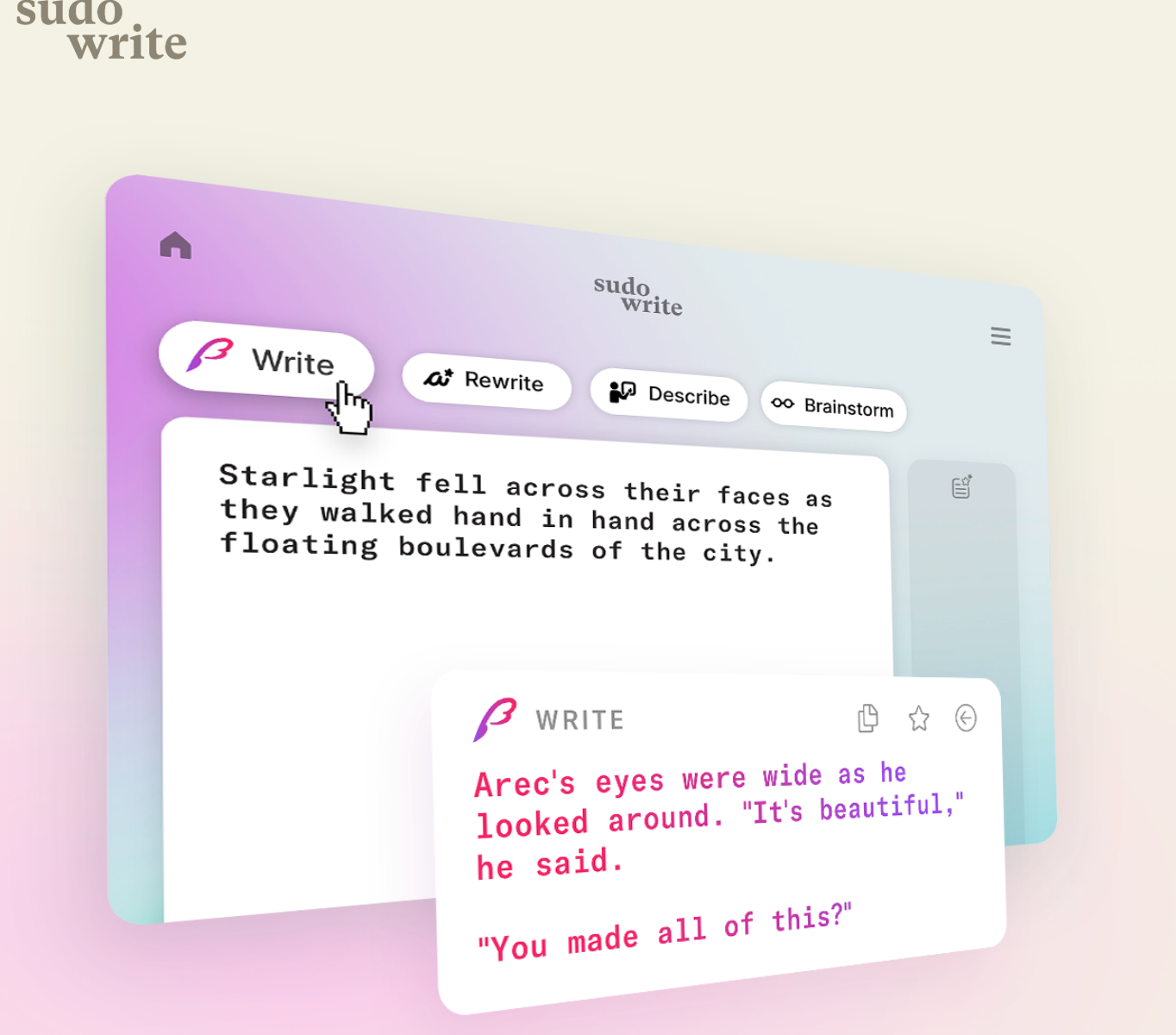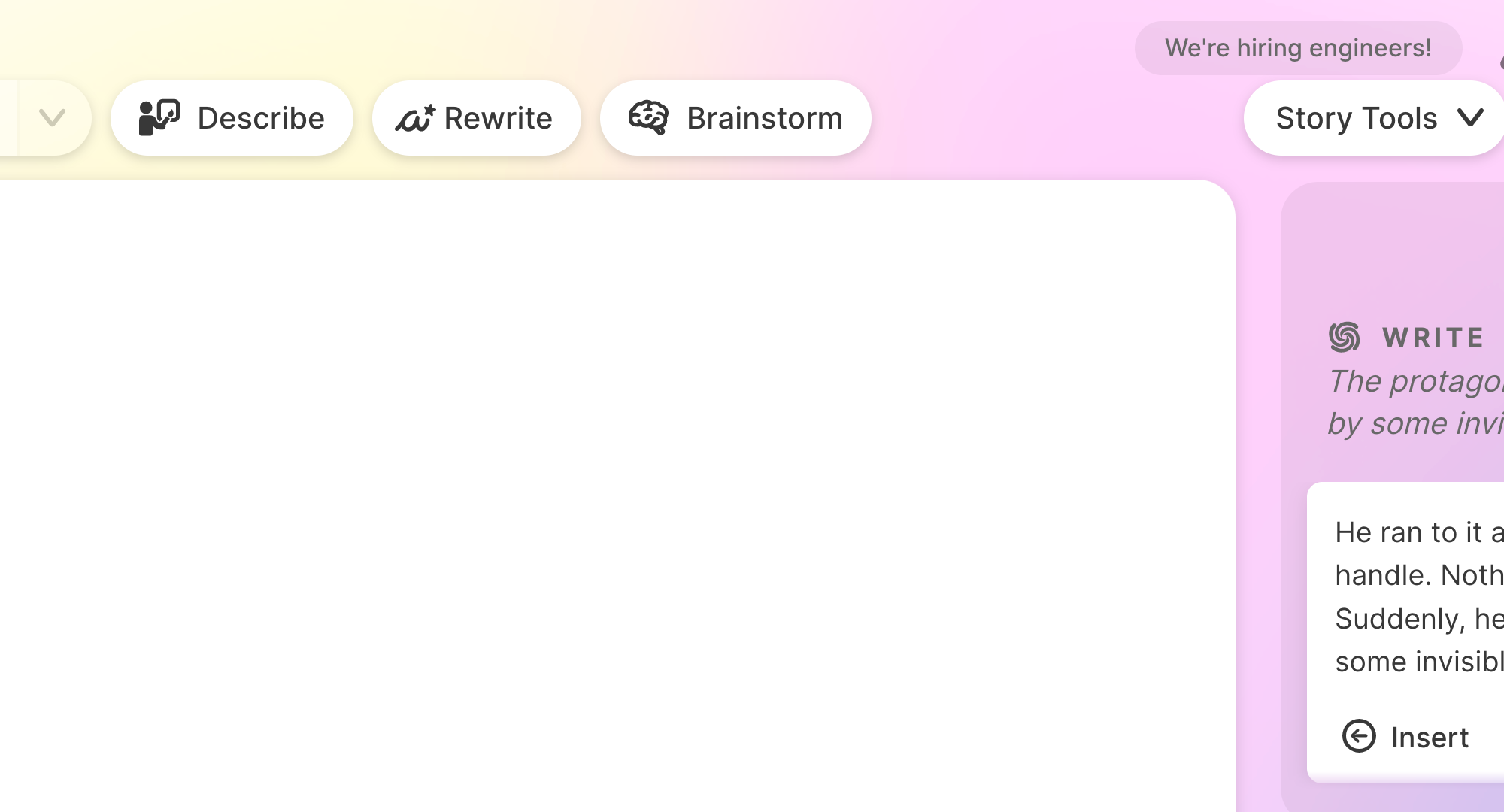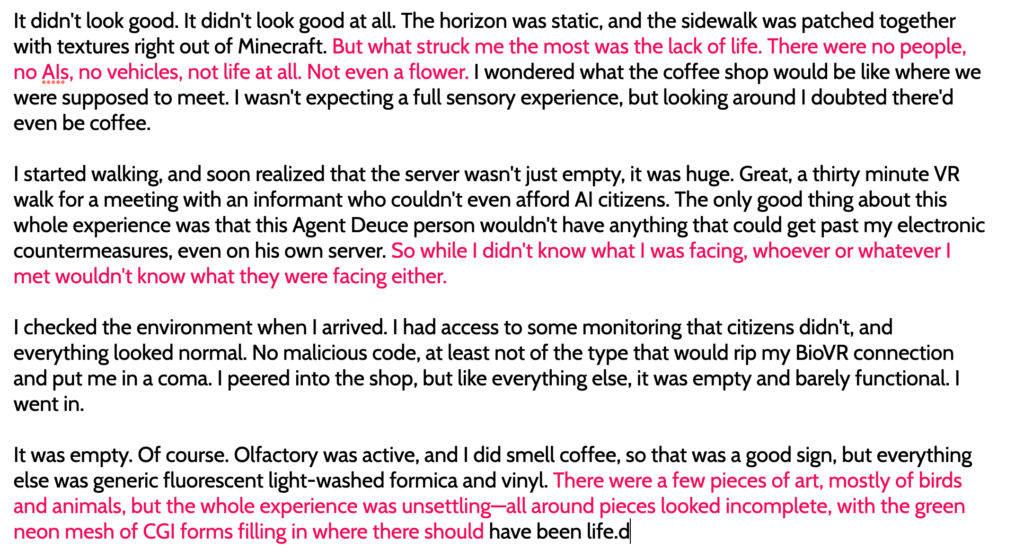It’s been an interesting challenge writing the Wedding Day novel, mainly due to how I splintered the short story into different works, all of which had positives and negatives. Putting those pieces together has been a bit frustrating, but—I think—ultimately going to lead to a compelling piece.
First some history. I wrote the short story “Wedding Day” for John Joseph Adams’ End is Nigh anthology. It was set in the world of my story “Biographical Fragments of the Life of Julian Prince,” which John had published in Lightspeed Magazine and was reprinted in The Years’ Best Science Fiction anthology. I received a lot of positive feedback about “Wedding Day,” but it kind of just faded into history, as most of my stories do.
A couple years later, Jeremy Elice, the head of television for Blumhouse, wanted to use the story for their Hulu TV series Into The Dark. It didn’t quite fit the vibe of the series, but the story resonated with him, and he wanted to produce it. When I met with Jeremy and Blumhouse producer Bea Sequeira, the enthusiasm was real. In fact, Bea took the story to their head of feature films, and Blumhouse decided to buy the story for a feature film instead. They even had writer/director Clea Duvall lined up.
The movie fell apart due to Clea getting a much bigger opportunity from Sony, but I was able to retain all the rights due to some luck in timing.
So I decided to write the feature screenplay myself.
The First Wedding Day Screenplay
That led to the first variation of “Wedding Day,” a very dense and not-very-good screenplay of the story. In the screenplay I added some characters and some visually focused in-scene elements that didn’t exist in the story, but I also crammed way too much into the screenplay. I sent it off to my friend, novelist and screenwriter Matt Mikalatos, who said he liked it, but it was too dense and plot-heavy for a screenplay—everything moved a bit too fast, and we never got a good sense of the characters. It’s important to note that Matt didn’t give me any guidance on what to change, just that what I wrote didn’t work. He was right.
So I ripped out the marriage equality portion of the story, which lightened the screenplay considerably. There was also the fact that marriage equality had become legal after my story was published, so it made sense to me, even though the core reason I wrote the story was to create a story where conservative white folks would feel bad for not supporting marriage equality.
The Second Wedding Day Screenplay
By the time I was done with the second “Wedding Day” screenplay, I had achieved a lot of what I wanted: It was much more character focused like the short story, and no longer included marriage equality. It was solely focused on the two leads getting married during an apocalypse. At the same time, I had begun a working relationship. with Jeremy Elice, who had left Blumhouse and was working as an independent producer in Hollywood.
I sent Jeremy the Wedding Day screenplay, and he thought it was okay but not great. Hey, I was getting better at writing screenplays, but I still wasn’t quite there yet. Anyway, Jeremy didn’t go into great detail on the flaws of the screenplay because we quickly moved on to a different project of developing a TV series.
When that TV series went nowhere, Jeremy talked about turning the world of Julian Prince and the story of “Wedding Day” into a TV series, rather than a feature film. That made a lot of sense to me, as the original short story has a lot going on, which I realized when the first screenplay failed badly.
I never got to the Wedding Day pilot beyond some rough outlines, but in hindsight I’m glad I didn’t write it—it was awful. I tried to turn “Wedding Day” into a Walking Dead type “escape the asteroid” thing, and it totally lost the soul of what made the original story special.
The First Wedding Day Novel
I had spent a good three years constantly working on features and television pilots, without writing any prose at all. I wasn’t sure I would ever get back to writing novels when I checked in with John Joseph Adams. At the time things were uncertain at his Houghton-Mifflin imprint (which would soon be closed), and I asked if maybe he’d want to use a Wedding Day novel as a trial run of doing his own publishing company.
Now John and I go back ten years, and I’d really do anything for him, so I wasn’t looking for any kind of big financial windfall. John loved the Julian Prince universe (and the story “Wedding Day”), and he had actually requested I write one of the Julian Prince novels mentioned in the”Biographical Fragments…” story. So this seemed like a fun win-win. I could get back into writing novels, and I’d potentially give him some asset to use however it would make the most sense.
In prepping to write the novel, I now had three pieces of source material: The short story and two feature screenplays. The piece that I felt most fit a novel (and didn’t have to deal with the reality of marriage equality being legal now) was the second screenplay. So I wrote the novel adapted from that. Yes, I wrote a novel adapted from a screenplay adapted from a short story. I think you can see where I’m going here.
I wrote the novel in present tense, which felt right, and it ended up being 48,000 words, way too short for a novel. Now the responsible thing would have been to do a complete rewrite and expansion, but I was lazy and not sure I was actually that enthusiastic about getting back into writing novels, so I sent it off to John with an apologetic, “It’s too short, but check it out, and I’ll revise it if you have notes.”
Because of things swirling around him at the time, John never had the chance to read the novel, thank goodness. Because it’s awful. Like really, really bad. I’m embarrassed he even has it in his possession.
A Short Interlude
So, with my tail between my legs and assuming I’d lost my ability to write prose, I went back to writing scripts. One of the scripts I wrote was a virtual reality thriller that was really tightly paced, and I felt would make a great thriller novel. So, with at least some semblance of excitement, I worked on the novel of that screenplay. I also focused more on the elements of prose that would make it more immersive, and over the span of writing and revising that novel, two things happened: I regained my confidence and love of writing prose, and I wrote a pretty good novel.
After writing that novel I went back and wrote a feature film screenplay, and that’s when I decided I was having too much fun doing both and I would alternate writing screenplays and novels, which is what I’m now doing. But, what would be the next novel to write? Well, part of me was still so annoyed with the original Wedding Day novel being so bad, that I wanted to tackle that. Also, I had a lot of raw material, patching that together would be easy, right? Well…
The Second Wedding Day Novel
So the first thing I decided to do was use the previous novel as my foundation for the new novel. Easy, right? I had nearly 50,000 words written, and all I’d have to do is rewrite and revise from that. So I sat down and with the short story and the second feature film screenplay nearby as a reference, I started working on it. I was about 10,000 words into it when I realized that it wasn’t resonating. Something was missing.
And that’s when I realized that all this time I had missed the soul of the original story. The foundational and emotional core of the story wasn’t that the two main characters wanted to get married and that these various barriers were in the way. The emotional core of the story was that they wanted to get married but can’t. What the asteroid did was allow them to get married, after all. So it was this stark hope/despair combination that was powerful. it turns out that the marriage equality plot that I had pulled from the second feature and first novel was the heart of the story. Oops.
So in my writing program, Scrivener, I added the original screenplay as a reference to use for moving forward with the second novel. This made things frustratingly complex, as I now had the following documents inside Scrivener that I was building from:
- A short story
- A feature film
- A second feature film
- A novel
And to make matters worse, the one I should have used as the foundational source—the first feature—was the one I now had to layer in because it didn’t exist in the current draft. This has not been a minor effort, as adding it changed practically the entire novel I had in front of me, and that meant hours and hours and hours of revision, which is what I’m doing now.
Re-thinking the First Screenplay
The first screenplay turned out to be the best narrative to use for the novelization of the short story. The pieces I added and the structure of the various plots all work well. But a great story can make a horrible screenplay, and Matt was right—this was a flawed screenplay. It simply was too much for a two hour film.
Yet those pieces are fantastic for a novel, and that was an important lesson I learned in this process—how to better recognize narrative structures that are best for various media like novels and films. It will also help me with adapting them if I so choose. My mistakes led me to recognizing how not to make them again.
So What’s Next
I’ll have the Wedding Day novel draft done by the end of the year, and it will be ready to send out to agents or publishers shortly after that. What will its future be? I don’t know. It may end up never seeing the light of day. It happens. But I do know that I learned more about writing through this process of writing a short story, two feature films, and two novels than I had in a long time.










